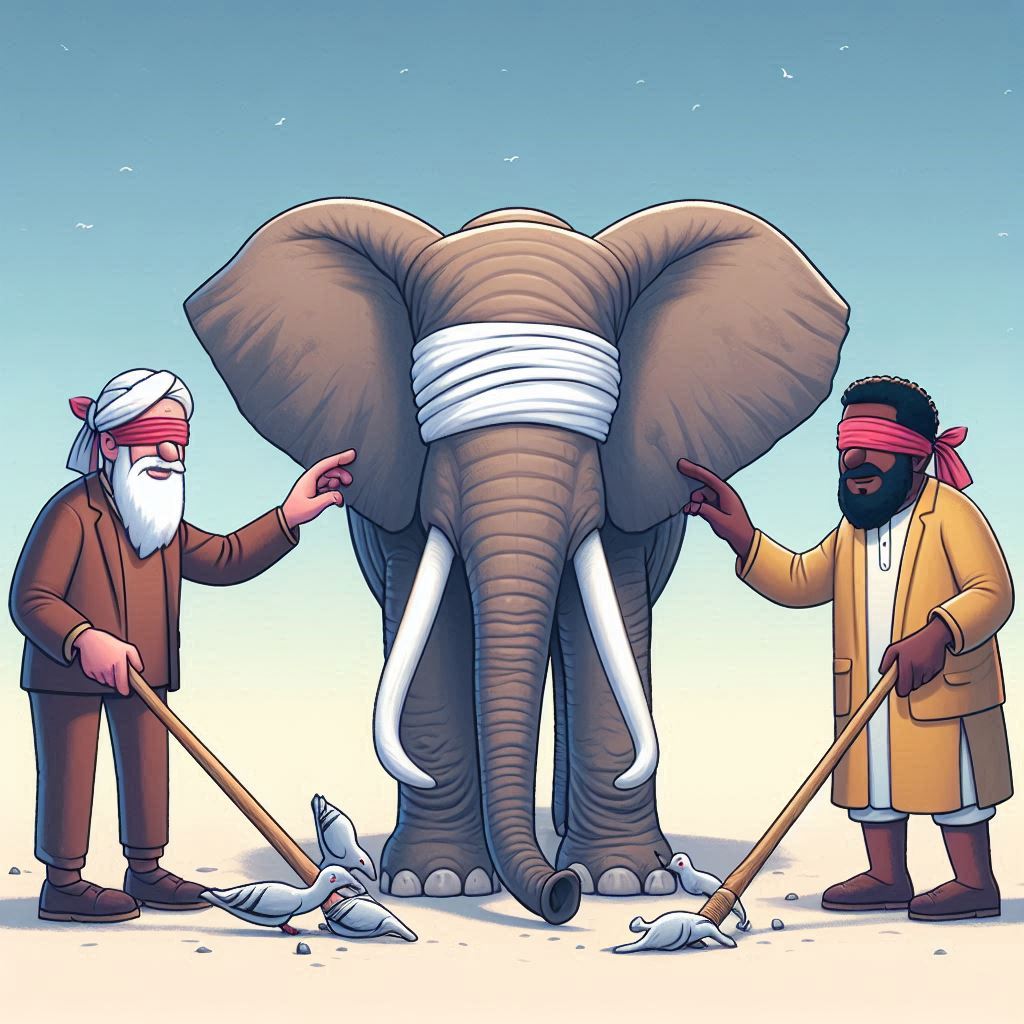Last week, we were in a group talking about Systems Thinking, and someone recommended me the book “The Fifth Discipline” by Peter Senge. Knowing the person who recommended it, it didn’t take me long to get a copy. This book explains the concept of learning organizations and how it is linked to what Donella Meadows wrote in her book “Thinking in Systems”, we do not act in isolation, and there are delays and feedback loops that can make an action that seems to have a positive result, end up having a negative and amplified result.
I do not want to advertise books, but to introduce something that seems to me fundamental in companies (and in everyday life) and yet goes unnoticed: we often think we are alone, but we are part of an ecosystem, our work and actions are part of something bigger. Therefore, traditional approaches of analyzing components in isolation or simple cause -> effect analysis are not always valid. Systems thinking allows us to understand how the different parts of a system interact with each other.
We will not go into describing the different feedback loops and nonlinear changes that help model the environment (I recommend the two books mentioned at the beginning) but into something more trivial. Let’s not think that we are the center of it all.

One of the examples that Peter points out in his book refers to a case that happened in a car factory in Detroit. There, the operators wanted to know why the Japanese could be so efficient and precise while having lower costs than them in an assembly process. They found that for three different parts of the engine, the Japanese used the same type of bolt, while they used different bolts for each part. What’s the difference? In the American assembly line, as three different types of bolts were required, different inventories and different tools were also needed to tighten them. And why is this the case in the American factory and not in the Japanese one? Because of the organization (and cultural part) of the company. In the American factory, there were three teams of engineers developing the parts, while in the Japanese factory there was one person responsible for engine assembly.
Each of the working groups in the American company, created their own design, and implemented it. And possibly as single pieces, the design was optimal, but they forgot that these pieces are part of something bigger, and by having this vision, it is no longer an optimal design. The most shocking thing may be to think that each of the three groups thought they had done a great job… even that their work was better than the rest.
And why didn’t they talk among the groups of the American company to improve the overall result? Well, there could be many reasons, but possibly, they thought that if they said they had asked another group how they had solved the screw issue, the merit in the eyes of their bosses would go to the other group. Or maybe there were ego issues of “I am the one who knows the most about what is best for the design” (The “not invented here” syndrome). Or that they are evaluated only on the performance and design of the particular part, but not the entire engine assembly process. Or simply culture. All this leads to sub-optimal solutions.

The truth is that too often we think only of our job, “I am my position” says Peter in the book. When you focus on your position, you have little sense of responsibility for the results produced when all parties interact.
I remember one occasion when we were driving a harmonization of processes between various departments. These departments seemed to be working correctly in isolation (at least according to them), but it was when they worked with each other that problems arose. Different documents, different tools, timing… the interactions between them were not working as expected; and we presented a proposal for a way of working to the board. The proposal had been widely discussed and aligned with all the groups involved, so that we could do something common to all of them. After the presentation, the leader of one of the groups (with whom we had already discussed the process) sent the board a letter in which he commented things like “this process is very expensive to implement”, “this process does not contribute anything” and “we already have this process in place”… all in the same letter.
He spoke with his field of work in mind without thinking about the global, long-term actions. Or maybe it was for one of the other reasons we have seen above with the American car manufacturer, but he wasn’t looking at the global impact.
Because there are many people who are willing to adopt a common way of working, as long as the common way of working is theirs (again The “not invented here” syndrome), that is when resistance appears.
The lack of knowledge of all the variables of the environment in which we operate, is something that was already pointed out in antiquity through the parable of the blind men and the elephant (some mention writings from 500 BC in India). This lack of knowledge can lead us to make suboptimal decisions (perhaps optimal for the knowledge we have, but not for the global).

It is very difficult to know absolutely all the factors surrounding a decision, but we must try to know as many of them as possible, because if there is something clear, it is that a decision, a job, an action, will affect other parts of our environment, will affect the system. Systems thinking is a great help for this.